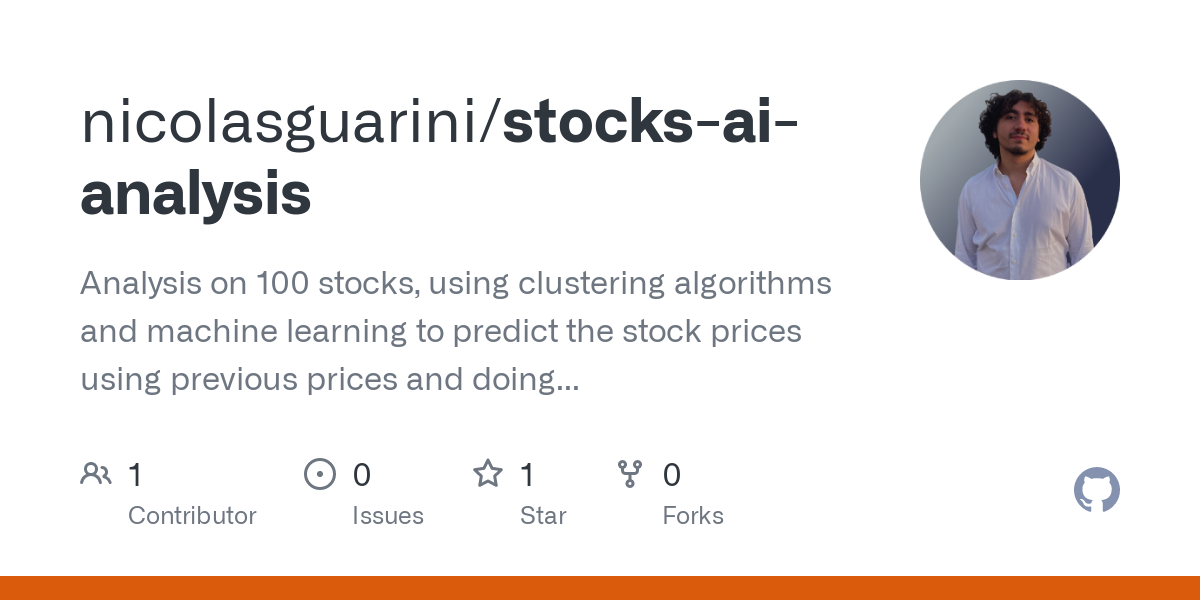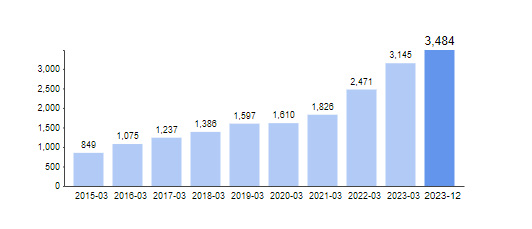1. Cloud Computing Scalability:
Tips: Use cloud-based services like Amazon Web Services (AWS), Microsoft Azure, or Google Cloud to scale your computational resources as needed.
Why: Cloud computing services allow for flexibility when scaling down or up based on the volume of trading and the model complexity, as well as data processing needs.
2. Choose high-performance hardware to perform real-time Processing
Tip: For AI models to function efficiently, invest in high-performance hardware like Graphics Processing Units and Tensor Processing Units.
Why GPUs/TPUs are so powerful: They greatly speed up the process of training models and real-time processing that are essential to make quick decision-making on stocks with high speeds like penny shares and copyright.
3. Increase the speed of data storage as well as Access
Tip: Use high-speed storage solutions like cloud-based storage, or solid-state drive (SSD) storage.
Why: Fast access to historic data as well as real-time market information is essential to make timely AI-driven decisions.
4. Use Parallel Processing for AI Models
Tip: Make use of parallel computing to perform multiple tasks at once, such as analysing different market or copyright assets.
The reason: Parallel processing is able to speed up models training, data analysis and other tasks when working with large datasets.
5. Prioritize Edge Computing For Low-Latency Trading
Tip: Implement edge computing methods where computations are performed closer to the data source (e.g. data centers or exchanges).
Why: Edge computing reduces the amount of latency that is crucial for high-frequency trading (HFT) and copyright markets, where milliseconds count.
6. Optimize the Algorithm Performance
A tip: Optimize AI algorithms for better performance during both training and execution. Techniques like pruning (removing unimportant model parameters) can help.
The reason is that optimized models use less computational resources, while still maintaining efficiency, thus reducing the requirement for expensive hardware, and accelerating trading execution.
7. Use Asynchronous Data Processing
Tip: Use asynchronous processing, where the AI system processes information independently of other tasks. This enables real-time data analysis and trading without delay.
The reason: This method reduces downtime and increases system throughput. This is particularly important for markets that are as dynamic as the copyright market.
8. The management of resource allocation is dynamic.
Use tools to automatically manage resource allocation based on the load (e.g. the hours of market and major events, etc.).
Why: Dynamic allocation of resources helps AI systems function efficiently, without over-taxing the system. decreasing downtimes during trading peak periods.
9. Make use of light models to simulate trading in real time.
TIP: Choose machine-learning models that can make quick decisions based on the latest data without needing significant computational resources.
The reason: when trading in real-time (especially when dealing with penny shares or copyright) It is more crucial to take swift decisions instead of using complicated models, as the market can move quickly.
10. Control and optimize the computational cost
Keep track of the costs associated with running AI models, and optimise for cost-effectiveness. Cloud computing pricing plans such as reserved instances and spot instances can be selected based on the needs of your company.
What’s the reason? A proper resource allocation makes sure that your margins for trading aren’t slashed when you trade penny shares, unstable copyright markets or tight margins.
Bonus: Use Model Compression Techniques
You can decrease the size of AI models by employing models compression techniques. This includes quantization, distillation, and knowledge transfer.
The reason: Models that are compressed retain their efficiency while remaining efficient with their resources, making them the ideal choice for real-time trading where computational power is limited.
These tips will help you improve the computational capabilities of AI-driven trading strategies so that you can develop efficient and cost-effective trading strategies whether you’re trading in penny stocks or cryptocurrencies. Read the best best ai for stock trading advice for blog recommendations including ai copyright trading, ai sports betting, best stock analysis website, ai investing platform, best ai for stock trading, trading ai, best copyright prediction site, investment ai, artificial intelligence stocks, best ai trading app and more.

Top 10 Suggestions For Ai Stockpickers, Investors And Forecasters To Pay Attention To Risk-Related Metrics
Pay attention to risk-related metrics. This will ensure that your AI-powered stock picker, investment strategies, and predictions are well adjusted and able to withstand changes in the markets. Understanding and reducing risk is essential to shield your investment portfolio from big losses. It also allows you to make informed, data-driven choices. Here are 10 top suggestions on how you can incorporate risk-related metrics into AI selections for stocks and investment strategies.
1. Understanding Key Risk Metrics Sharpe Ratios, Max Drawdown and Volatility
Tip: To assess the efficiency of an AI model, concentrate on important metrics like Sharpe ratios, maximum drawdowns and volatility.
Why:
Sharpe ratio measures return in relation to risk. A higher Sharpe ratio indicates better risk-adjusted performance.
Maximum drawdown helps you assess the potential of large losses by assessing the loss from peak to trough.
The term “volatility” refers to price fluctuation and market risk. High volatility indicates higher risk, while less volatility suggests stability.
2. Implement Risk-Adjusted Return Metrics
Tip: To evaluate the performance of your AI stock picker, you can use risk-adjusted measures such as Sortino (which focuses primarily on downside risk) and Calmar (which evaluates returns to maximum drawdown).
The reason: These metrics assess how well your AI models perform compared to the amount of risk they assume. They help you determine if the return on investment is worth the risk.
3. Monitor Portfolio Diversification to Reduce Concentration Risk
Utilize AI optimization and management to ensure that your portfolio is properly diversified across asset classes.
Why: Diversification reduces the risk of concentration. This happens when a portfolio becomes overly dependent on one sector, stock or market. AI can help identify relationships between assets and alter the allocation to lessen the risk.
4. Follow beta to measure the market’s sensitivity
Tip: Use the beta coefficient to measure the sensitivity to market movement of your stock or portfolio.
Why: A beta higher than one suggests a portfolio more unstable. Betas that are less than one suggest lower volatility. Knowing beta lets you adapt your risk exposure to the market’s movements and the investor’s risk tolerance.
5. Implement Stop-Loss Levels and Make-Profit decisions based on risk tolerance
Use AI models and predictions to determine stop-loss levels as well as levels of take-profit. This will allow you to manage your losses and lock-in the profits.
Why: Stop-losses protect your from losses that are too high while take-profit levels secure gains. AI can assist in determining the most optimal levels, based on previous price movements and volatility, maintaining an equilibrium between reward and risk.
6. Use Monte Carlo Simulations to simulate Risk Scenarios
Tip: Run Monte Carlo simulations to model an array of possible portfolio outcomes under various risks and market conditions.
What is the reason: Monte Carlo simulations allow you to assess the probability of future performance of your portfolio. This helps you prepare for different risks.
7. Assess correlation to evaluate both the systemic and non-systematic dangers
Tips: Make use of AI for correlation analysis between your portfolio and larger market indexes to determine both systemic and unsystematic risk.
The reason is that systemic risks impact all markets, whereas the risks that are not systemic are specific to each asset (e.g. concerns specific to a company). AI can be used to identify and reduce unsystematic or correlated risk by suggesting less correlation assets.
8. Monitor the value at risk (VaR) in order to estimate the risk of loss
Tip – Utilize Value at Risk (VaR) models, that are based on confidence levels to calculate the potential loss for a portfolio within a timeframe.
Why? VaR provides a clear picture of the worst-case scenario of losses, and lets you assess your portfolio’s risk in the normal market. AI will adjust VaR according to the changing market condition.
9. Set dynamic risk limits Based on market conditions
Tips: AI can be used to dynamically adjust risk limits according to the current volatility of the market, economic conditions and stock correlations.
What are the reasons Dynamic risk limits make sure your portfolio is not exposed to excessive risk during periods that are characterized by high volatility or uncertainty. AI analyzes data in real-time to adjust your portfolio and maintain your risk tolerance at an acceptable level.
10. Machine Learning can be used to predict Risk Factors and Tail Events
Tips: Make use of historic data, sentiment analysis, and machine learning algorithms in order to predict extreme or high risk events (e.g. Black-swan events, stock market crashes events).
Why: AI helps identify patterns of risk that traditional models may not be able to detect. They can also predict and prepare you for the most rare but extreme market conditions. By analyzing tail-risks, investors can be prepared for the possibility of catastrophic losses.
Bonus: Reevaluate risk-related metrics frequently in light of the changing market conditions
Tips: Reevaluate your risk factors and models when the market is changing, and update them frequently to reflect economic, geopolitical and financial risks.
What’s the reason? Market conditions change constantly. Letting outdated models for risk assessment could result in inaccurate assessments. Regular updates will make sure that AI models are regularly updated to reflect changing market conditions and to adapt to new risks.
Conclusion
You can create an investment portfolio that is more resilient and flexibility by monitoring risk indicators and incorporating them into your AI stocks, forecasting models, and investment strategies. AI provides powerful tools to evaluate and manage risk. Investors can make data-driven, informed decisions which balance the potential for return with acceptable levels of risk. These tips can help you build a solid framework for risk management to improve the stability of your investment and increase its profitability. Take a look at the top rated ai stock prediction examples for blog tips including best ai for stock trading, ai for trading, using ai to trade stocks, best ai stocks, trading bots for stocks, ai stock trading app, best ai trading bot, ai stock, smart stocks ai, stock ai and more.
